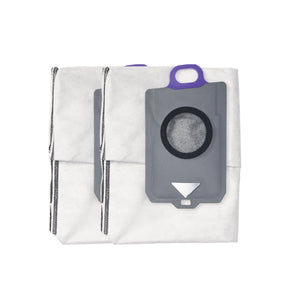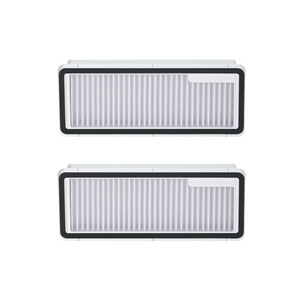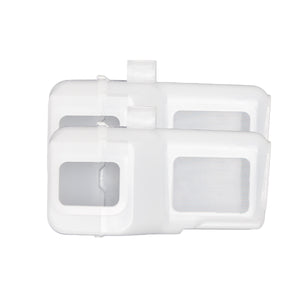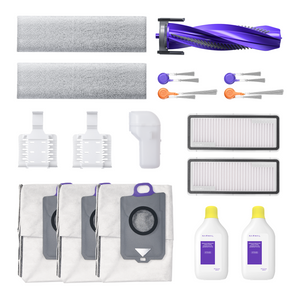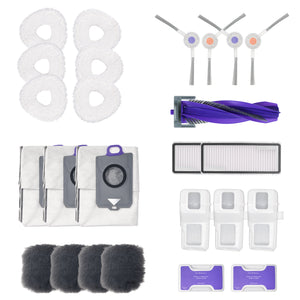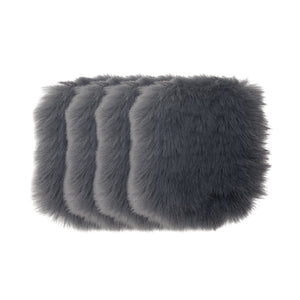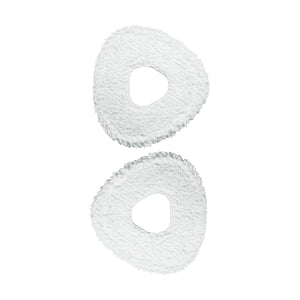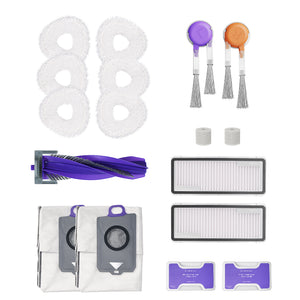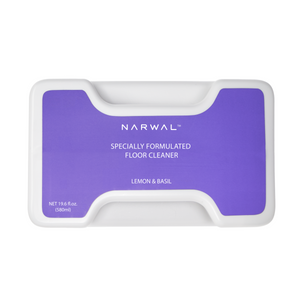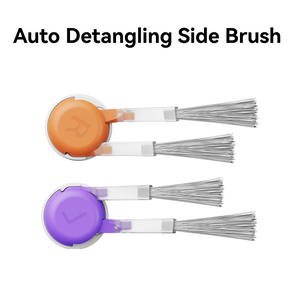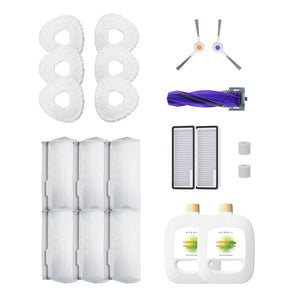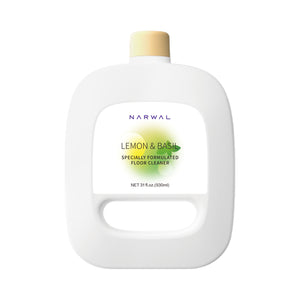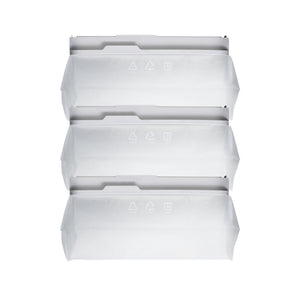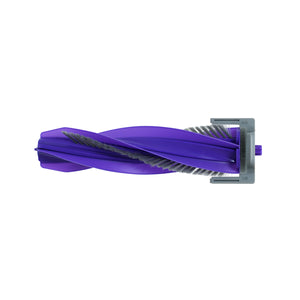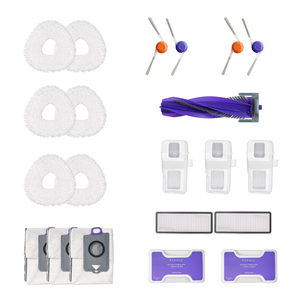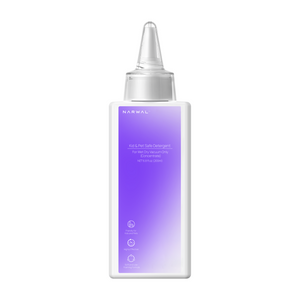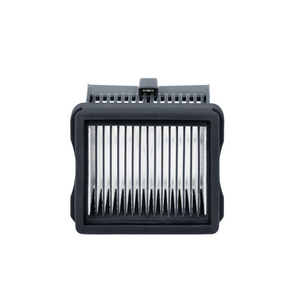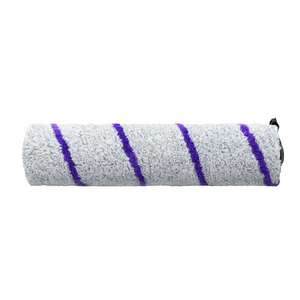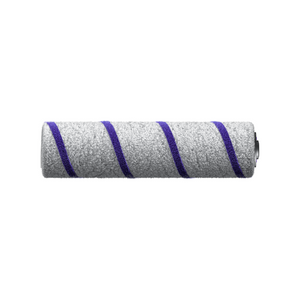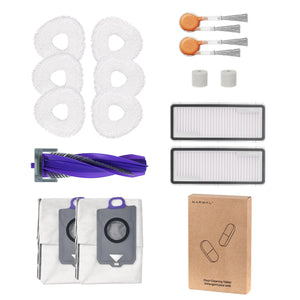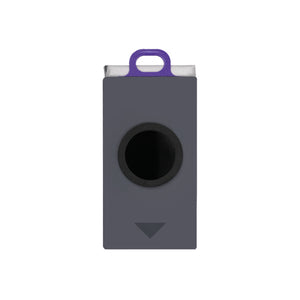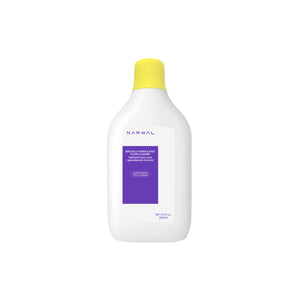Yes, robot vacuums can effectively clean carpets and rugs. These devices use advanced suction power, brush systems, and smart navigation to tackle dirt, dust, and debris on various floor types, offering a convenient cleaning solution for modern homes.
As their popularity grows, many wonder how well robot vacuums perform on carpets and rugs compared to traditional methods. This article explores their capabilities, covering working principles, challenges, optimization techniques, and tips for choosing the best model.
How Robot Vacuums Work on Carpets and Rugs
Robot vacuums clean carpets and rugs using advanced sensors for navigation and obstacle avoidance. They automatically adjust suction power when detecting carpeted areas to effectively remove dirt deep within fibers. This section explains how their smart navigation and brush design enable smooth and effective carpet cleaning.
Smart Navigation and Suction Adjustment
Most modern robot vacuums use intelligent sensors to detect different floor types and obstacles. When they encounter carpeted areas, they automatically increase suction power for deeper cleaning. Height detection sensors prevent them from getting stuck on thick rugs or carpet edges, while wheel suspension systems allow seamless transitions between hard floors and soft surfaces. This adaptive technology ensures consistent cleaning power with minimal manual intervention.
How Brushes Handle Different Textures
Rotating brushes are key to effective carpet cleaning. They agitate carpet fibers to loosen embedded dust and debris, while side brushes sweep dirt toward the vacuum’s main suction path. Some models can even adjust brush roll speed or height depending on carpet type — for instance, slowing down on high-pile rugs to prevent tangling or damage. This design flexibility allows robot vacuums to adapt to various textures, from low-pile rugs to plush carpets.

Common Robot Vacuum Problems on Carpets (and How to Fix Them)
While robot vacuums offer many advantages, they can face specific challenges when cleaning different types of carpets and rugs. Understanding these challenges can help you optimize your robot vacuum's performance and extend the life of your carpets.
Thick or High-Pile Carpets
Robot vacuums may struggle with thick or high-pile carpets, such as wool rugs (e.g., kilim, Persian, or Oriental rugs), due to their dense fibers. The vacuum's wheels and brushes can get stuck, reducing cleaning efficiency. Additionally, the vacuum's suction power may not penetrate deep enough to remove embedded dirt.
Solution: Choose a model with strong suction power (8,000Pa or higher), rotating brushes, and the ability to climb high piles (up to 20mm). Advanced sensors and mapping technology can also help the vacuum navigate these challenging surfaces effectively.
High-pile and shag carpets need stronger suction and smarter wheels. Lower-end models often lose traction or tangle in the long fibers. Below is a quick comparison of common suction levels needed for different carpet types:
|
Carpet Type |
Recommended Suction |
Example Model Type |
|
Low-pile (flat weave) |
3,000–5,000 Pa |
Entry-level robot vacuums |
|
Medium-pile (woven rugs) |
6,000–10,000 Pa |
Multi-surface vacuums |
|
High-pile / shag |
12,000 Pa + |
Premium models like Narwal Flow |
The higher the suction, the deeper the cleaning — but wheel design and brush type matter just as much. Choose models with anti-tangle brushes and adjustable suspension so they can climb fibers without getting stuck.
Tassels and Fringe
Carpets with tassels or fringe, like some wool or silk rugs, can cause robot vacuums to stop or tangle. The brushes may get caught in the delicate fibers, potentially damaging the rug or the vacuum itself.
Solution: Fold the tassels under the rug before cleaning or use virtual boundaries to keep the vacuum away from these areas. Some advanced models also feature anti-tangle brush designs to minimize this issue.
Dark or Black Carpets
Some robot vacuums have difficulty navigating dark or black carpets, as their sensors may misinterpret these surfaces as obstacles or drop-offs. This issue is common with rugs made of synthetic fibers or certain natural fibers.
Solution: Opt for a vacuum with advanced sensor technology (e.g., LiDAR or 3D mapping) to ensure smooth navigation on darker surfaces. Some models also allow you to adjust sensor sensitivity in the app.
Delicate Fibers (e.g., Silk Rugs)
Silk rugs require extra care due to their delicate fibers. Using a robot vacuum with high suction power or aggressive brushes can cause fraying or damage.
Solution: Use a vacuum with soft bristle brushes and adjustable suction settings (e.g., low or eco mode). Setting virtual barriers can also provide an extra layer of protection against accidental harm.
Unique Textures (e.g., Hair-on-Hide Rugs)
Rugs like cowhide or sheepskin have unique textures that require special care. The vacuum's brushes or suction can pull on the fibers, leading to damage over time.
Solution: Adjust the vacuum to gentle suction and no-brush mode, or use virtual barriers to exclude these rugs from automated cleaning. Alternatively, clean them separately with manual methods.
Natural Fiber Rugs (e.g., Sisal, Jute, Seagrass)
While natural fiber rugs like sisal, jute, and seagrass are durable and eco-friendly, their slightly uneven surfaces can pose a challenge for some robot vacuums. The fibers can also trap dirt and debris, making cleaning less effective.
Solution: Choose a vacuum with strong suction and adjustable brush settings to handle uneven surfaces. Regular maintenance of the vacuum's brushes and filters is also essential to prevent clogging.
Synthetic Fiber Rugs
Synthetic fiber rugs, often used in wall-to-wall carpeting, require powerful suction and rotating brushes to effectively remove dirt and debris. However, some vacuums may struggle with low-pile synthetic rugs because their flat texture makes it harder to lift dust and hair from the surface.
Solution: Look for a vacuum with adjustable suction levels and multi-surface brushes to ensure efficient cleaning on both low-pile and medium-pile synthetic rugs.
If you have pets, synthetic carpets can trap even more hair and dander between the fibers. A robot vacuum for pet hair on carpet should combine high suction power (10,000 Pa or more) with rubberized, tangle-free brushes. Rubber brushes bend slightly to lift hair without wrapping, making them safer for soft synthetic materials.
Models like the Narwal Flow have been tested by SGS and shown to achieve a 0% hair-tangling rate, meaning pet fur is collected smoothly without clogging the brush. Running the vacuum daily or every other day helps prevent hair from embedding deep in the pile and keeps synthetic carpets looking cleaner for longer.
Shaggy or Long-Pile Rugs
Shaggy rugs or those with long piles can be particularly challenging for robot vacuums. The long fibers can clog the vacuum's brushes or reduce suction power.
Solution: Use a vacuum with anti-tangle brush rolls and high suction power. Some models also feature auto-lift brushes that retract when cleaning shaggy rugs to prevent clogging.
Patterned or Multi-Colored Rugs
Rugs with intricate patterns or multi-colored designs can confuse the vacuum's sensors, causing it to misinterpret the surface as an obstacle or uneven terrain.
Solution: Choose a vacuum with advanced mapping technology (e.g., LiDAR or camera-based navigation) to accurately detect and clean patterned rugs without getting stuck.
Low-Pile or Flat-Weave Rugs
While low-pile rugs (e.g., cotton or flat-weave rugs) are generally easier to clean, some robot vacuums may struggle to pick up fine debris or pet hair embedded in the fibers.
Solution: Opt for a vacuum with strong suction and specialized brushes designed for low-pile surfaces. Regular maintenance of the vacuum's brushes and filters is also crucial for optimal performance.
Best Robot Vacuums for Dark Carpets
Some robot vacuums have trouble with dark carpets because infrared sensors can mistake dark colors for drop-offs. When this happens, they avoid those areas and leave parts of the carpet uncleaned.
The Narwal Freo Z10 Ultra Robot Vacuum & Mop solves this problem with dual 136° RGB cameras and dual AI chips, allowing it to recognize dark surfaces correctly. It cleans thoroughly without skipping black or navy rugs.
[cta:narwal-freo-z10-ultra-robot-vacuum-mop]
With 18,000Pa suction power and Carpet Cleaning Master technology, it automatically boosts suction by 160% when cleaning carpets and lifts its mop by 12mm to keep rugs dry. Its EdgeReach™ triangular mop extends into corners and along walls for a complete edge-to-edge clean.
If your home has dark carpets, choose a robot vacuum with AI visual navigation and RGB camera sensors like the Narwal Freo Z10 Ultra. These systems handle color contrast accurately, ensuring your dark rugs are cleaned as well as your lighter ones. How to Optimize Performance on Carpets
How to Optimize Performance on Carpets
To ensure your robot vacuum delivers the best performance on carpets and rugs, you can make a few simple adjustments that significantly improve cleaning results.
Here are three proven techniques that keep your robot vacuum running efficiently across all carpet types.
Adjust Suction and Height
Carpets vary in pile height and density, which can affect how well a robot vacuum performs.
Most advanced models can automatically adjust suction power when they detect carpeted areas — but manual fine-tuning helps maximize efficiency.
-
Low-Pile Carpets: Set the vacuum lower for stronger contact with the fibers. This ensures fine dust and debris are fully lifted.
-
High-Pile Carpets: Raise the vacuum slightly so the wheels and brushes can move freely without getting stuck.
-
Tip: If your model allows manual control, increase suction power when cleaning thick or wool rugs to achieve a deeper clean.
Pro insight: Maintaining the correct balance between suction and height reduces strain on the motor while improving dirt pickup efficiency.
Use Virtual Boundaries
Certain rugs or carpeted areas — especially those with fringe, tassels, or delicate fibers — can cause tangling or unnecessary wear on the vacuum.
By setting virtual boundaries or no-go zones, you can prevent the robot from entering risky areas.
-
Use your app to draw digital “keep-out” zones around delicate rugs.
-
Mark areas where tassels or decorative edges may catch on the brush roll.
-
For robot vacuums with mop functions, boundaries also prevent water from reaching carpeted sections.
Pro insight: Strategic no-go zones save cleaning time, extend brush life, and prevent damage to premium rugs.
Regular Brush and Filter Maintenance
Regular cleaning is essential for maintaining suction strength and overall performance.
Dust buildup or tangled hair can block airflow and reduce cleaning power over time.
-
Clean Brushes: Remove hair, threads, and debris from the main and side brushes weekly.
-
Check Filters: Rinse or replace HEPA filters as recommended to maintain airflow.
-
Empty Dustbin Frequently: A full dustbin restricts suction efficiency, especially on thick carpets.
Pro insight: Consistent maintenance helps the robot vacuum maintain optimal suction and navigation, ensuring every carpet pass remains effective.
Can Robot Vacuums Go Over Rugs and Thresholds?
Yes — most modern robot vacuums can go over rugs and thresholds as long as the height difference is within their climbing range. However, performance depends on several factors: rug material, pile height, suction power, and sensor accuracy. To achieve seamless cleaning across different surfaces, it’s essential to choose a model specifically designed for multi-surface navigation — like the Narwal Freo Z Ultra, engineered to tackle carpets, rugs, and thresholds with ease.
How Height and Surface Affect Climbing Ability
A robot vacuum’s ability to transition between surfaces depends mainly on pile height and floor texture.
-
Low-pile rugs (e.g., cotton or flat-weave): Most vacuums glide over these easily.
-
High-pile or shag rugs: Require stronger suction (10,000–12,000Pa) and motor torque to avoid getting stuck.
-
Thick thresholds or transitions: These act like mini-ramps. Only high-end models can handle thresholds up to 20mm.
Pro insight: The Narwal Freo Z Ultra uses adaptive wheel suspension and high-torque motors, allowing it to climb smoothly over obstacles while automatically adjusting suction power. This ensures no loss of cleaning efficiency when moving from hardwood to carpet or rug.
[cta:narwal-freo-z-ultra-robot-vacuum-mop]
Most modern robot vacuums can climb thresholds between 15–20 mm (0.6–0.8 in). However, the maximum climbing height depends on wheel size, torque, and floor transition design. Here’s a simple comparison:
|
Brand |
Max Climbing Height |
Notable Feature |
|
Narwal Flow |
40 mm (1.57 in) |
Dual motor torque + auto-lift mop |
|
Roborock S8 Pro |
20 mm |
All-wheel drive design |
|
iRobot Roomba j9+ |
16 mm |
Carpet Boost suction mode |
|
Ecovacs T30 |
18 mm |
Anti-snag suspension |
If your home has raised thresholds or thicker rugs, look for vacuums with larger wheels and auto-lift mops. This prevents stalling and ensures smooth transitions between rooms.
Rug vs. Threshold — What’s Harder for Robots?
From a navigation standpoint, rugs test traction, while thresholds test climbing power. Let’s break it down:
|
Challenge |
Typical Problem |
Narwal Solution |
|
Rugs (texture variation) |
Soft or uneven fibers cause drag; sensors may misread patterns as obstacles |
Dual RGB cameras + AI mapping recognize texture differences accurately |
|
Dark or black rugs |
Infrared sensors misinterpret dark colors as “cliffs,” avoiding them |
RGB and LiDAR fusion eliminate false cliff detection |
|
Fringes/tassels |
Brushes get tangled in long threads |
Edge Cleaning Mode cleans perimeter safely |
|
Thresholds (height transition) |
Lower-end models stop at >15mm |
Freo Z Ultra climbs up to 20mm with triple-laser navigation |
Pro insight: The combination of EdgeSwing cleaning and auto-lift mop allows the Freo Z Ultra to transition across rooms and rugs without pausing or wetting carpeted areas.
Real-World Example — Narwal Freo Z Ultra
The Narwal Freo Z Ultra illustrates how next-gen robot vacuums are redefining multi-surface performance:
-
12,000Pa suction power: Pulls dirt from both low-pile and dense rugs.
-
Zero-tangle brush system: Prevents clogging on shag or pet-hair surfaces.
-
Auto-lift mop technology: Detects carpeted areas and raises the mop to keep rugs dry.
-
Matrix & Edge Cleaning modes: Optimize coverage for patterned rugs and corners.
-
Triple-laser obstacle avoidance: Ensures smooth navigation around thresholds, furniture, and clutter.
Example in action: When transitioning from hardwood to a high-pile rug, the Freo Z Ultra increases suction, lifts the mop pad, and climbs smoothly over the rug’s edge — all automatically, without human input.

Best Robot Vacuums for Carpets and Rugs
Cleaning carpets is a challenge for most robot vacuums. The best ones don’t just collect dust — they adapt to different surfaces, lift debris from fibers, and keep themselves clean as they go.
The Narwal Flow is designed for homes with both floors and carpets. It combines powerful suction, real-time mop cleaning, and AI navigation to handle every surface in one continuous run.
Deep Carpet Cleaning: With CarpetFocus™ Technology, the Narwal Flow automatically increases suction and seals airflow when it detects carpet. It lifts its mop by 12mm to keep carpets dry and maintains strong pickup power — up to twice that of standard vacuums.
No-Tangle, Pet-Friendly Design: The DualFlow brush system prevents hair from wrapping around the roller. Tested by SGS, it achieved a 0% tangle rate, making it ideal for homes with pets.
Smart Navigation and Privacy Protection: Using dual RGB cameras and an AI chip, Narwal Flow recognizes over 200 household objects and cleans smoothly around them. All data is processed locally, ensuring safe, private operation.
Quiet and Low-Maintenance: With 22,000Pa suction and a noise level below 60dB, it cleans deeply yet quietly. Its base automatically washes and dries the mop, collects dust for up to 120 days, and needs almost no manual care.
In short, Narwal Flow shows how modern robot vacuums can clean carpets efficiently — not just by suction power, but through smart sensing and self-cleaning that keep every pass fresh and consistent.
[cta:flow-robot-vacuum-and-mop]
Key Buying Tips for Choosing a Robot Vacuum for Carpets
When choosing a robot vacuum for carpets and rugs, focus on a few key features that balance power, intelligence, and long-term care for your floors:
-
Strong Suction Power (10,000Pa+) – Needed to lift dust and debris from deep in carpet fibers. Models with sealed airflow designs maintain steady suction even on uneven surfaces.
-
Rubber or Dual-Flow Brushes – These flex better on rugs, prevent tangles, and are easier to clean than traditional bristle brushes.
-
Smart Surface Detection – Allows the robot to sense carpeted areas, boost suction automatically, and lift its mop to keep rugs dry.
-
Advanced Navigation (RGB or LiDAR) – Ensures efficient coverage, avoids repeated passes, and protects furniture while cleaning in straight, planned paths.
-
Quiet and Private Operation – Look for a noise level under 60dB and on-device data processing to protect your privacy.
-
Low Maintenance Design – Self-cleaning docks and washable filters reduce upkeep and long-term costs.
Modern models, such as the Narwal Flow, combine these features into one system — balancing strong carpet performance with intelligent automation and real-time self-cleaning to make everyday cleaning easier and more reliable.
Conclusion: Yes—Robot Vacuums Can Clean Carpets Effectively
Robot vacuums can clean carpets and rugs efficiently when equipped with the right technology. Modern models adjust suction, lift mops, and detect carpeted areas to remove dust, hair, and deep-seated debris without damage.
The key lies in smart design. Features like CarpetFocus™ suction, AI navigation, and tangle-free brushes—found in Narwal’s latest models such as Flow and Freo Z10 Ultra—show how far this technology has advanced.
With these innovations, cleaning carpets is no longer a challenge. Robot vacuums now move easily across rugs and floors, keeping your home cleaner, smarter, and healthier every day.
FAQs
Do Robot Mops Avoid Carpet?
Modern robot mops are designed for hard floors but have sensors to detect and avoid carpeted areas. This feature prevents carpets from getting wet and allows the mop to focus on intended surfaces, enhancing its efficiency.
Is It OK to Vacuum Carpet?
Regular vacuuming is crucial for a clean home environment. It removes dirt, dust, and allergens, extending your carpet's lifespan. Using a vacuum with suitable settings for carpet fibers ensures effective cleaning without damage. Robot vacuums with adjustable suction and brush settings can provide optimal results for carpet cleaning.
How Often Should You Use a Robot Vacuum on Carpet?
Use your robot vacuum on carpet once a day for best results. If your home stays fairly clean, every other day is enough. Frequent cleaning prevents dust and dirt from building up deep in the carpet.



















